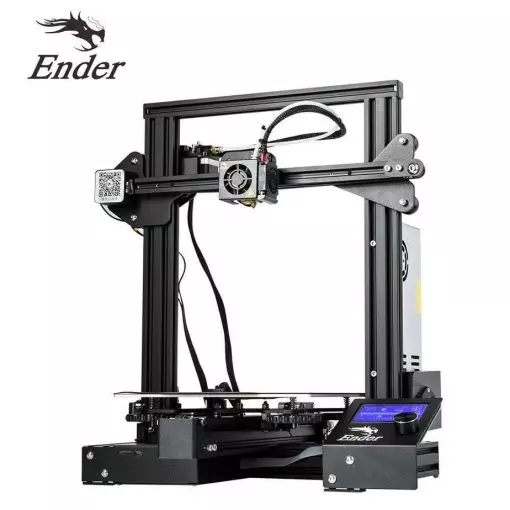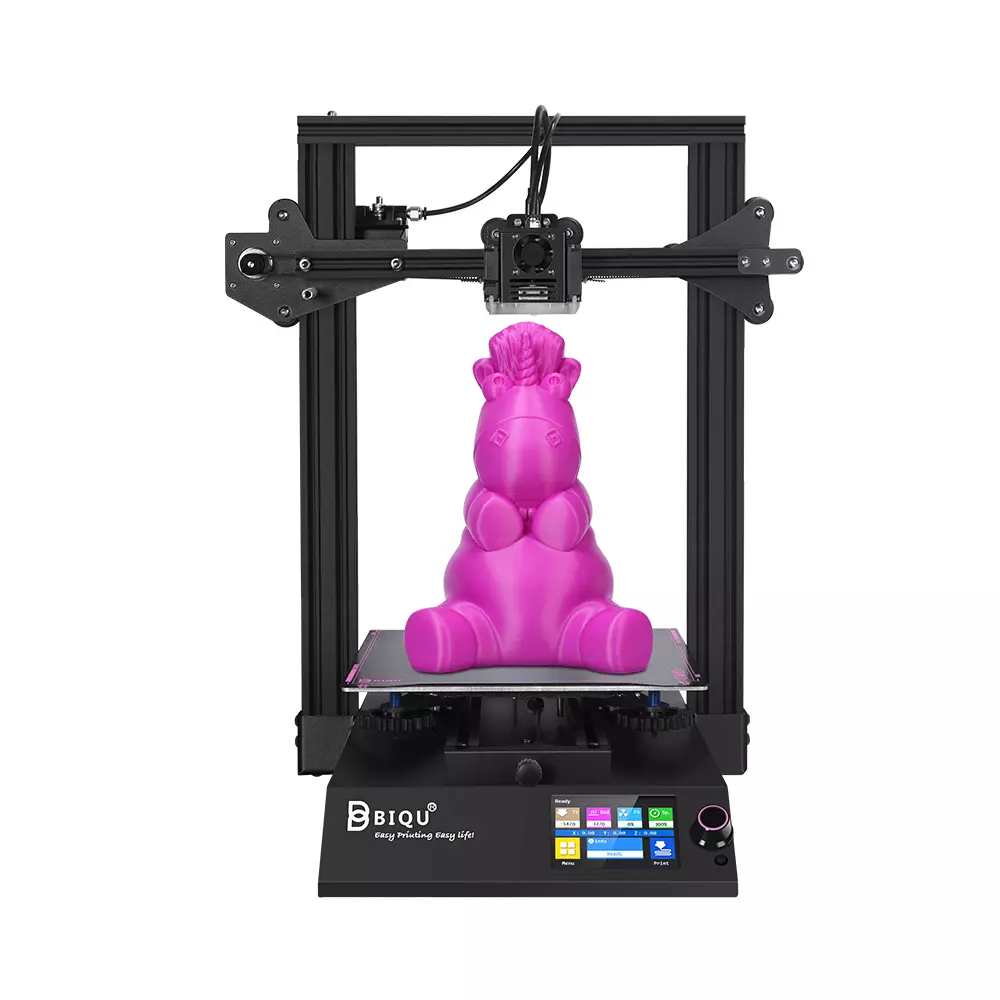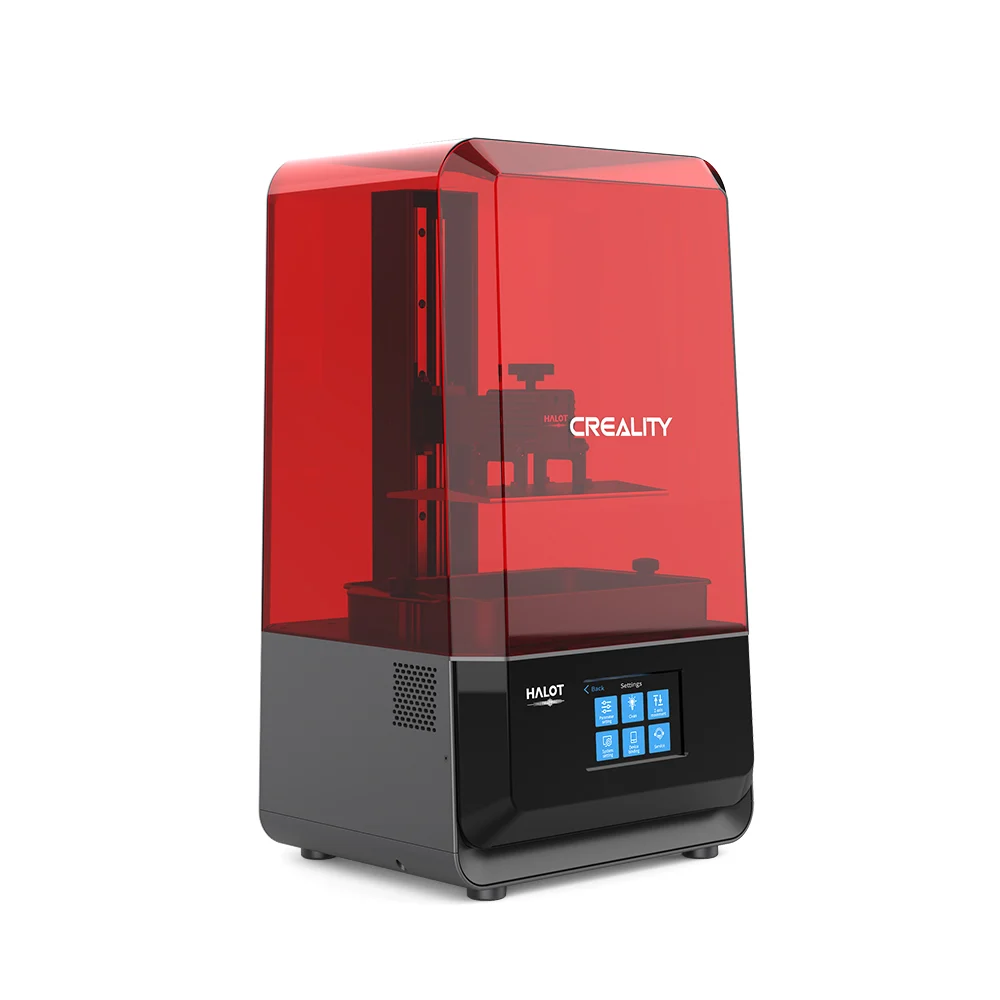Compare Ender 3 vs BIQU B1 vs Halot Lite
Comparison between the best 3D printers
Choose the best 3D printer at the best price. The cheapest 3D printers are here.
Buy a 3D printer here with 3D Fila.
 |
 |
 |
|
| Model | Ender 3[BUY Ender 3] |
BIQU B1 |
Halot Lite |
| Printing Material | Filament | Filament | Resin |
| Estimated price | $210,00 | $269,00 | $400,00 |
| Fabricante | Creality 3D | BigTreeTech | Creality 3D |
| Release Year | 2018 | 2020 | 2021 |
| Print Volume [mm] | 220x220x250 | 235x235x270 | 192x120x200 |
| Printer Size [mm] | 440x440x465 | 412x402x492 | 330x301x572 |
| Weight [kg] | 6,62 | 8,00 | 10,6 |
| Power Loss Recovery | NO | YES | NO |
| Maximum Resolution [mm] | 0,1 | 0,1 | 0,01 |
| Processor | 8 bits | 32 Bits BTT SKR V 1.4 | |
| Display | Mono | Touchscreen TFT 3,5'' | Display touchscreen 5'' |
| Power Supply | 24V / 270W | 24V / 360W | |
| Connectivity | SD / USB | SD / USB | SD / USB |
| Operating systems | Windows, Mac, Linux | Windows, Mac, Linux | Windows, Mac, Linux |
| Date of registration in the system | 2021-04-13 | 2021-04-14 | 2022-11-04 |
| Release date | 2018 | 2020 | 2021 |
| Extra features | The Ender 3 V1 is a DIY assembly 3D printer, a sales leader since 2017, standing out for its cost-benefit. With a wide printing capacity, it has a CNC machined structure for precision and stability. It offers high-precision prints with low noise, thanks to its innovative V-profile and pulleys. It has a self-adhesive magnetic platform for easy removal of models and excellent adhesion. The Ender 3 heats up quickly, reaching 100°C in 5 minutes, ideal for agile prints. It includes protection against power failures, allowing you to resume printing after interruptions, saving time and material. | The BIQU B1 is an advanced 3D printer with a silent 32-bit BTT SKR V1.4 motherboard and ARM Cortex-M3 CPU, offering DIY interfaces (I2C, SPI, WiFi) and dual Z-axis. Its dual BTT B1 TFT35 V3.0 operating system allows real-time monitoring and multiple printing modes, including G-code visualization effects. It stands out for its BIQU SSS (Super Spring Steel), ensuring easy model adhesion and simplified removal, with the possibility of using it on both sides. It includes a filament sensor, automatically pausing printing in case of filament breakage. The multicolored RGB lights integrated into the hotend allow you to view the printing status even at night. Additional notes include the need for a BIQU-specific Type-C cable and extra interfaces for smart filament sensor and BL Touch. | Crealitys Halot Lite printer stands out in the mid-size resin 3D printing segment, with a build volume of 192 x 120 x 200 mm and 50 micron resolution. It offers a monochrome LCD for fast and durable printing, and an upgraded light source that ensures over 80% uniformity across the print bed. It includes Wi-Fi connectivity for remote control and updates, an ARM Cortex CPU for efficient performance, and is compatible with Halot Box and Lychee slicing software. It also has an activated carbon filter to reduce odors. |
| Support for multiple colors and materials (AMS and CFS) | NO | NO | NO |
Notes * |
|||
| Cost-benefit | 6 / 10 | 7 / 10 | 8 / 10 |
| Hardware | 0.5 / 10 | 2 / 10 | 1.2 / 10 |
| Screen | . | . | . |
| Print volume | 3 / 10 | 3 / 10 | 3 / 10 |
| Performance | 1 / 10 | 1 / 10 | 9 / 10 |
| [BUY Ender 3] |
Conclusion |
| In comparing the Ender 3, BIQU B1, and Halot Lite 3D printers, several key factors emerge that can significantly influence your decision, particularly regarding price, features, and performance. The Ender 3, known for its affordability and strong cost-benefit ratio, stands out for DIY enthusiasts seeking a reliable entry-level printer. Its print volume is substantial, and the printer is praised for its precision and stability. However, it lacks advanced features such as power loss recovery, which may be a drawback for projects that require uninterrupted printing. The BIQU B1 offers more advanced specifications with a robust 32-bit motherboard, dual Z-axis for enhanced stability, and a variety of printing modes. Its unique build plate provides superior adhesion and ease of model removal. While priced higher than the Ender 3, its features may justify the cost for users who prioritize functionality and ease of use. On the other hand, the Halot Lite caters specifically to resin printing, presenting a different value proposition. Despite its higher price, it delivers exceptional resolution and uniformity, making it an excellent choice for those in need of detailed prints. Its additional features like Wi-Fi connectivity and an activated carbon filter further elevate its usability, but this comes at the expense of larger print volume and higher cost. In conclusion, the best 3D printer for you will depend on your specific needs. If budget constraints are paramount and you're looking for a reliable starter printer, the Ender 3 is a solid choice. For those willing to invest a bit more in advanced features, the BIQU B1 offers a well-rounded experience that could enhance the printing process. Alternatively, if high-resolution resin prints are your goal and you're ready to invest in a capable machine, the Halot Lite will meet your demands. Each option has its strengths and weaknesses, emphasizing the importance of aligning your choice with your particular printing requirements. |

